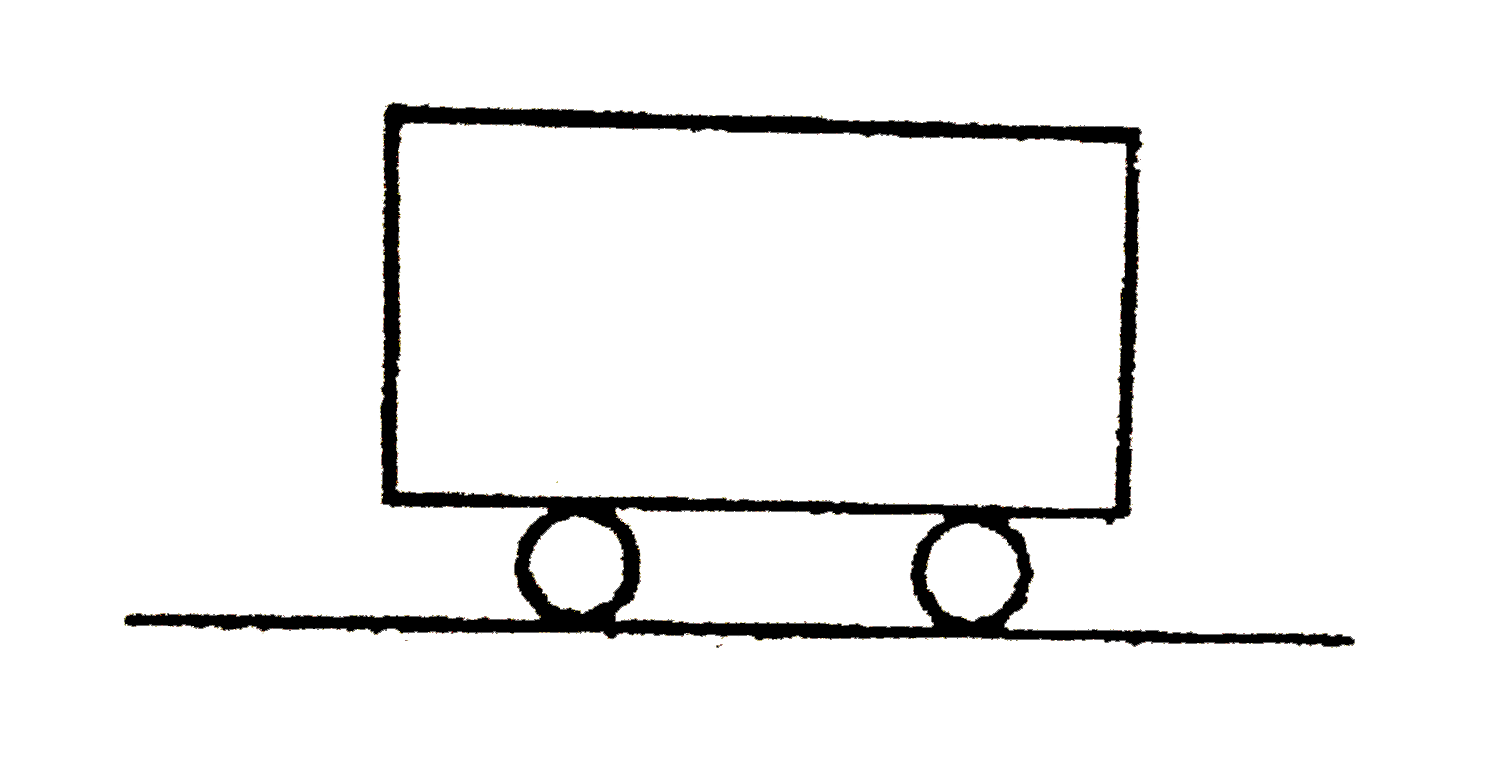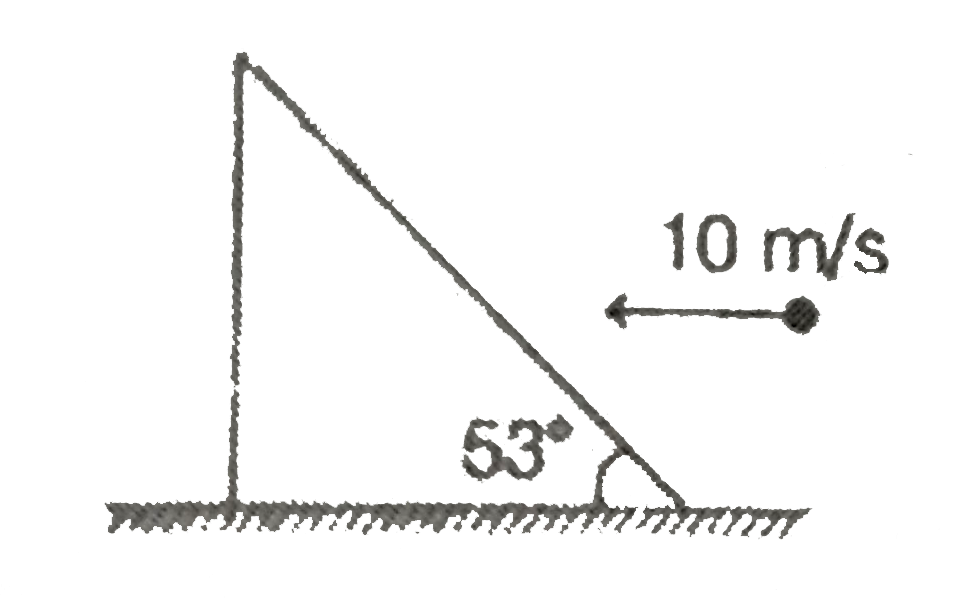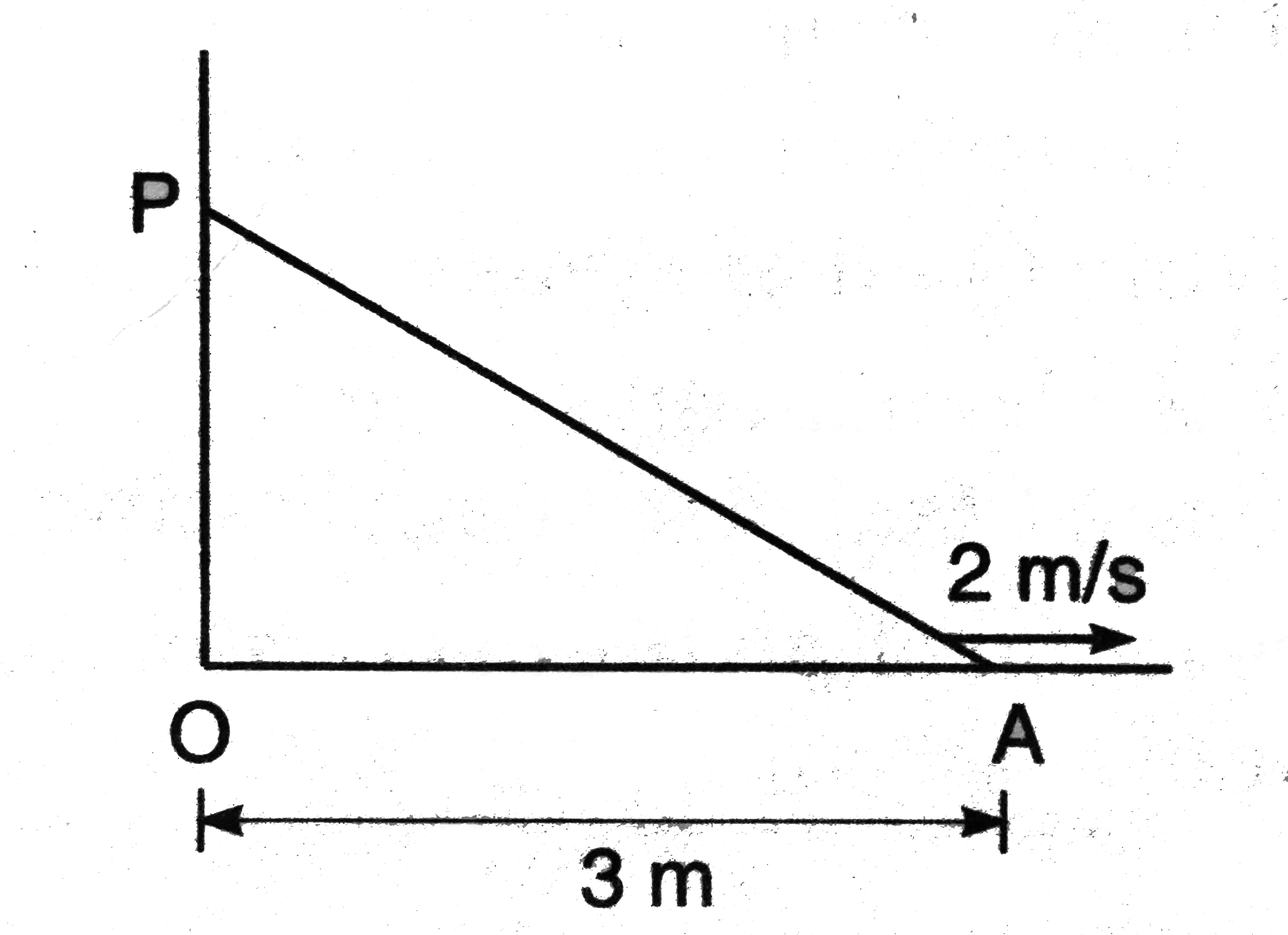Comprehension # 4
When the mass of a system is variable, a thrust force has to be applied on it in addition to all other forces acting on it. This thrust force is given by : →F=→vr(±dmdt). Here →vr is the relative velocity with which the mass dm either enters or leaves the system.

A car has total mass 50kg. Gases are ejected from its backwards with relative velocity 20m/s. The rate of ejection of gas is 2kg/s. Total mass of gas is 20kg. Coefficient of friction between the car and road is μ=0.1.
Maximum speed of car will be v=.......m/s :- (Take ln(43)=0.28 )
0.6
0.8
1.0
1.2
Step by step video & image solution for Comprehension # 4 When the mass of a system is variable, a thrust force has to be applied on it in addition to all other forces acting on it. This thrust force is given by : vec(F) = vec(v)_(r) (+- (dm)/(dt)). Here vec(v)_(r) is the relative velocity with which the mass dm either enters or leaves the system. A car has total mass 50 kg. Gases are ejected from its backwards with relative velocity 20 m//s. The rate of ejection of gas is 2 kg//s. Total mass of gas is 20 kg. Coefficient of friction between the car and road is mu = 0.1. Maximum speed of car will be v = ....... m//s :- (Take ln ((4)/(3)) = 0.28 ) by Physics experts to help you in doubts & scoring excellent marks in Class 11 exams.
Updated on:21/07/2023Topper's Solved these Questions
- CENTRE OF MASS, IMPULSE AND MOMENTUMBOOK - DC PANDEYCHAPTER - CENTRE OF MASS, IMPULSE AND MOMENTUMEXERCISE - More a than one option is Correct
1 Video
- CENTRE OF MASSBOOK - DC PANDEYCHAPTER - CENTRE OF MASSEXERCISE - Medical entrances gallery
27 Videos
- CENTRE OF MASS, LINEAR MOMENTUM AND COLLISIONBOOK - DC PANDEYCHAPTER - CENTRE OF MASS, LINEAR MOMENTUM AND COLLISIONEXERCISE - Level 2 Subjective
21 Videos
Similar Questions
A ball mass 2 kg moving horizontally with velocity 10 m/s hits a wedge of mass 5 kg placed on a horizontal surface as shown in the figure. Just after collision klvelocity of wedge is 3.2 m/s. There is no friction at any contact surface. Then (take sin 30∘=3/5)

View SolutionA rod of weight w is supported by two parallel knife edges A and B and is in equilibrium in a horizontal position. The knives are at a distance d from each other. The centre of mass of the rod is at distance x from A. The normal reaction on A is.. And on B is......
View SolutionA ladder AP of length 5m inclined to a vertical wall is slipping over a horizontal surface with velocity of 2m/s, when A is at distance 3m from ground. What is the velocity of COM at this moment?

View SolutionA system of particles is free from any external force vec v and vec a be the velocity and acceleration of the centre of mass, then it necessarily follows that :
View SolutionIf vec F is the force acting in a particle having position vector vec r and vec tau be the torque of this force about the origin, then
View SolutionWhen force →F1,→F2,→F3 are acting on a particle of mass m, the particle remains in equilibrium. If the force →F1 is now removed then the acceleration of the particle is :
View SolutionComprehension # 4 When the mass of a sytem is variable, a thrust force has to be applied on it in addition to all other forces acting on it. This thrust force is given by : vec(F) = vec(v)_(r) (+- (dm)/(dt)) Here vec(v)_(r) is the relative velocity with shich the mass dm either or leaves the system. A car has total mass 50 kg . Gases are ejected from this backwards with relative velocity 20 m//s . The rate of ejection of gas is 2 kg//s . Total mass of gas is 20 kg . Coefficient of friction between the car and road is mu = 0.1 . Car will start moving after time t = ......... second :-
View SolutionComprehension # 4 When the mass of a sytem is variable, a thrust force has to be applied on it in addition to all other forces acting on it. This thrust force is given by : vec(F) = vec(v)_(r) (+- (dm)/(dt)) Here vec(v)_(r) is the relative velocity with shich the mass dm either or leaves the system. A car has total mass 50 kg . Gases are ejected from this backwards with relative velocity 20 m//s . The rate of ejection of gas is 2 kg//s . Total mass of gas is 20 kg . Coefficient of friction between the car and road is mu = 0.1 . Maximum speed of car willl be v = ....... m//s :- (Take in (4)/(3) = 0.28 )
View SolutionComprehension # 4
When the mass of a sytem is variable, a thrust force has to be applied on it in addition to all other forces acting on it. This thrust force is given by : →F=→vr(±dmdt)

Here →vr is the relative velocity with shich the mass dm either or leaves the system. A car has total mass 50kg. Gases are ejected from this backwards with relative velocity 20m/s. The rate of ejection of gas is 2kg/s. Total mass of gas is 20kg. Coefficient of friction between the car and road is μ=0.1.
Car will stop after (from starting) t= ........... seconds :-
View SolutionAssertion:− If a particle is acted upon by an external force its momentum must change
Reason:−∣∣∣d→vdt∣∣∣ is ALWAYS equal to ddt|→v|
Here →v has its usual meaning.
View Solutionचुंबकीय क्षेत्र →B में वेग →v से गतिमान आवेश Q पर लगने वाला बल −−→(F) है
View Solutionअवमंदित आवर्त गति करते हुए एक कण की स्थिति, वेग एवं उसपर लगता अवमंदन का बल क्रमशः →r,→v तथा →F है। इनमें कौन कभी ऋणात्मक नहीं होगा ?
View SolutionThe velocity of a particle of mass 2 kg is given by vec(v)=at hat(i)+bt^(2)hat(j) . Find the force acting on the particle.
View SolutionA rocket is ejecting a mass m of gases per unit time with velocity V relative to the rocket, the thrust on the rocket is:
View SolutionFixed force on an object of mass m moving from fixed velocity v vec F Is charged. The power charged will be P
View SolutionIf vec F is the force acting in a particle having position vector vec r and vec tau be the torque of this force about the origin, then
View Solution
